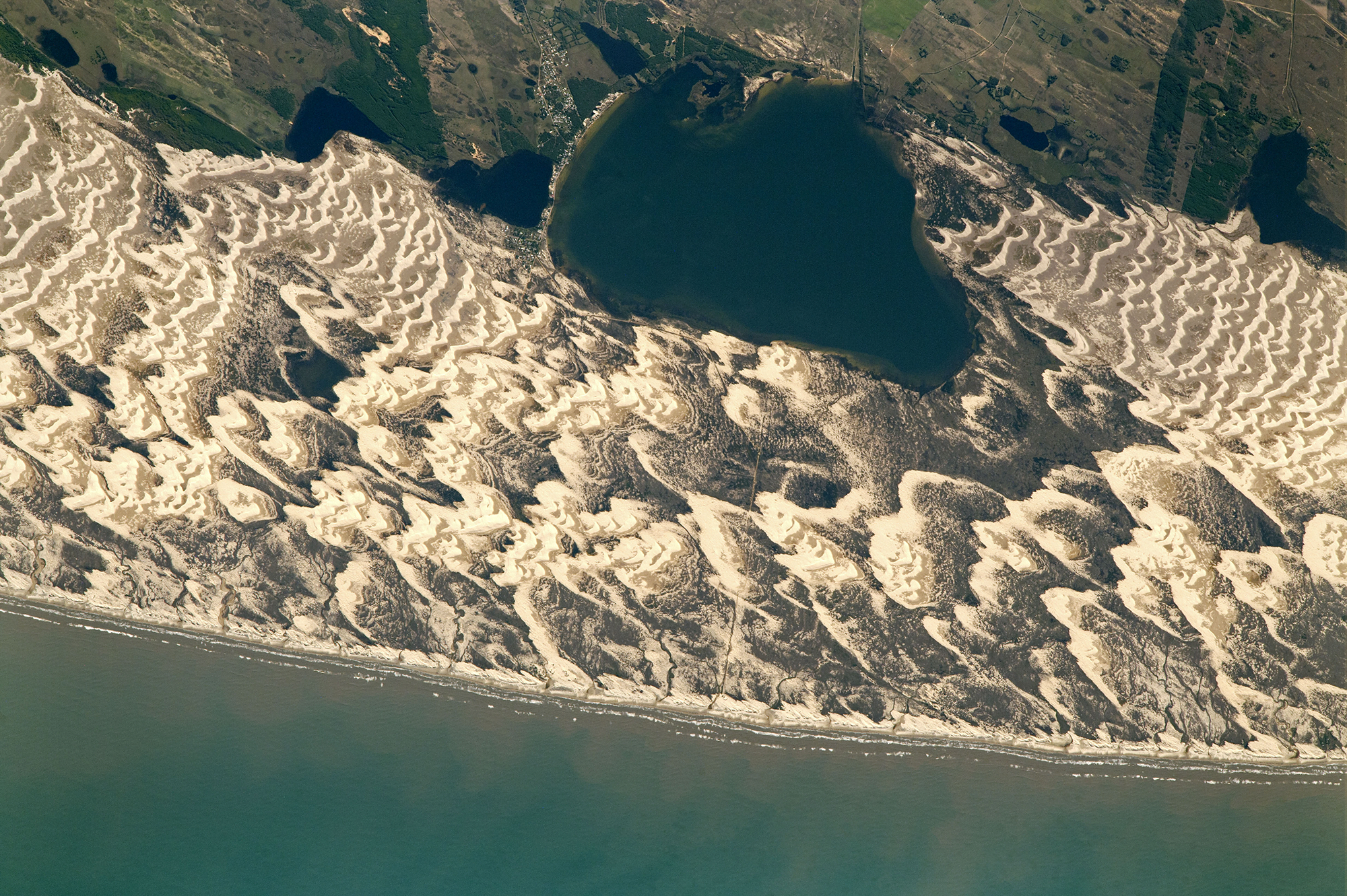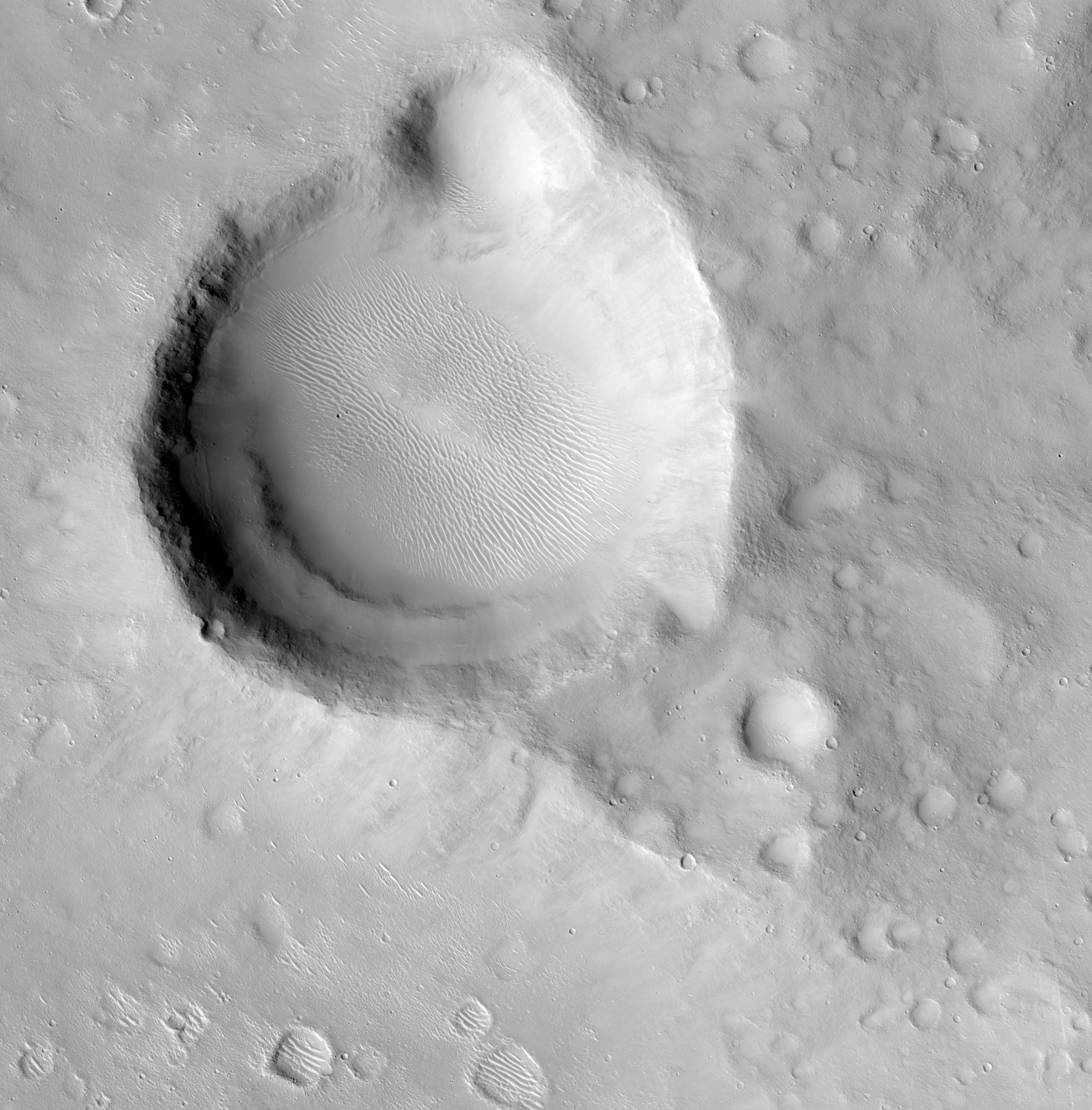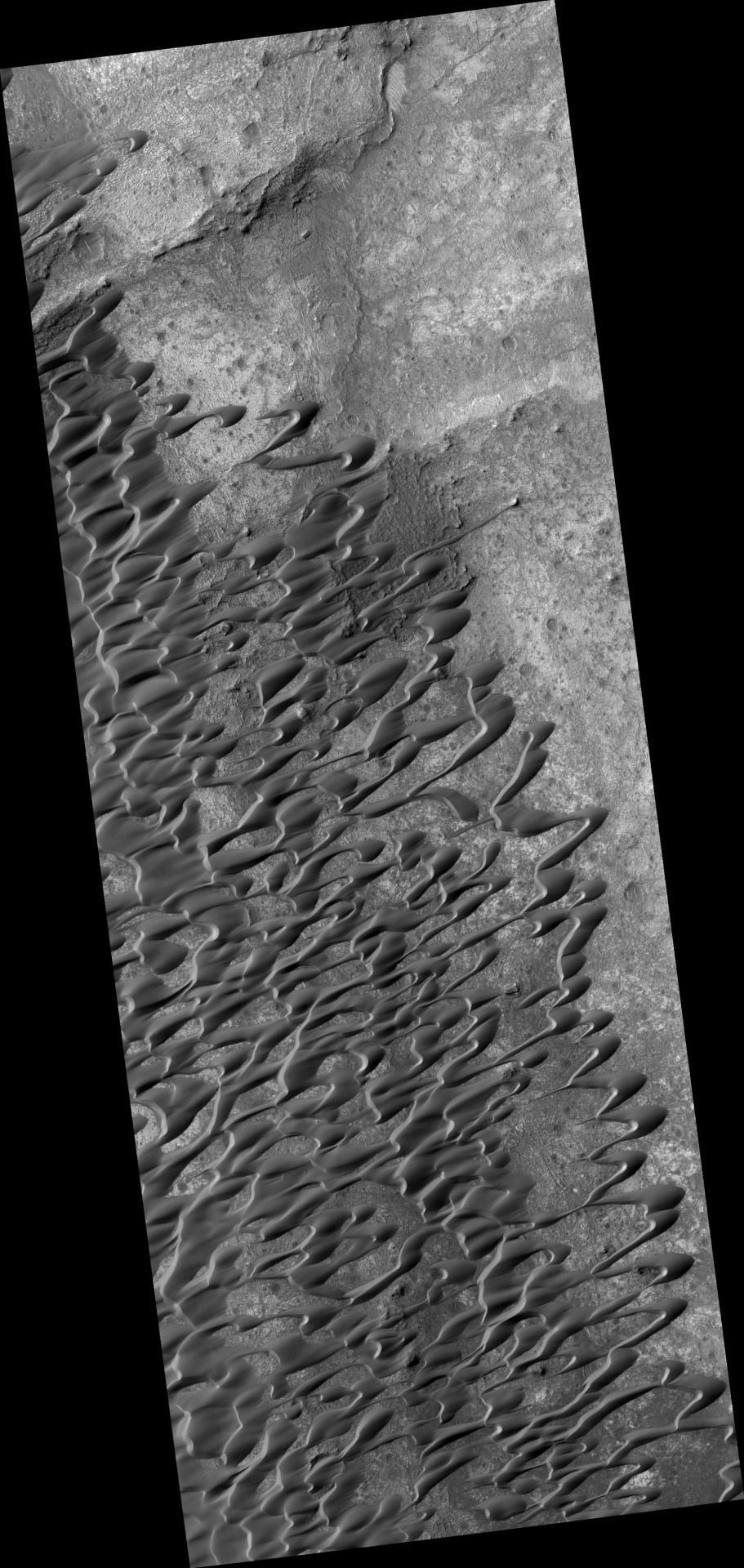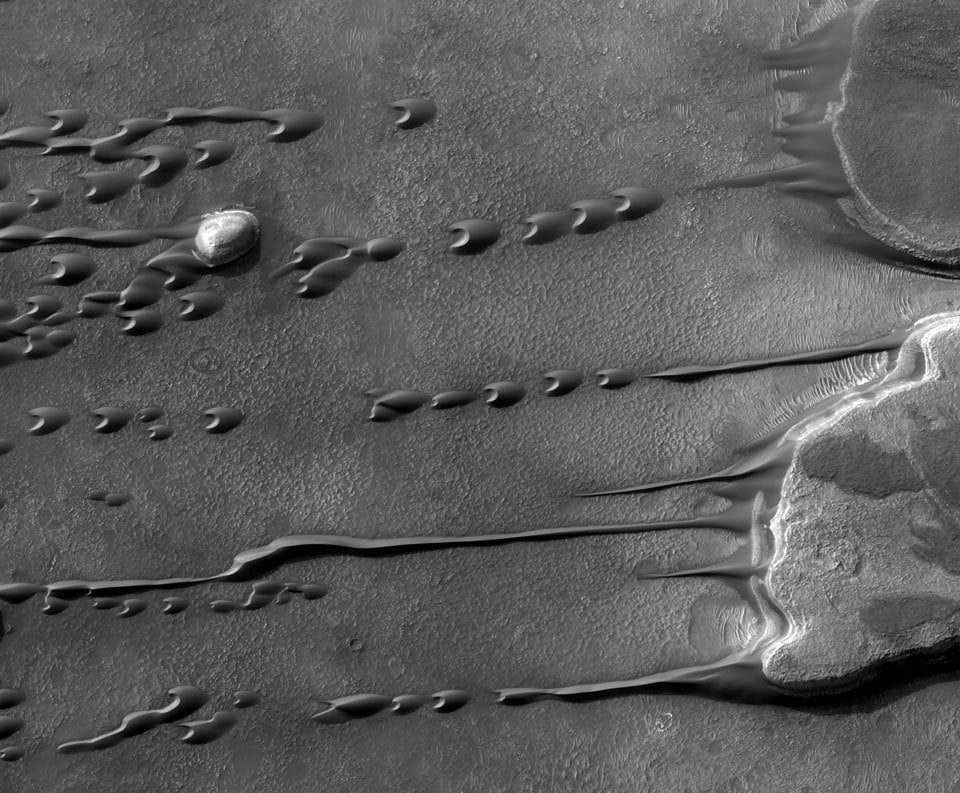Barchan dunes collide in this astronaut image of Brazil’s southern coastline. Barchan (pronounced “bar-kahn”) dunes are crescent-shaped; their tips point downwind into their direction of travel. When many barchan dunes overlap, they coalesce into a dune field like the one seen here. A dune’s speed depends on many factors, including the wind speed, dune size, and its proximity to other dunes. In experiments, dunes have even chased one another and changed speeds to avoid collision. (Image credit: NASA; via NASA Earth Observatory)
Tag: barchan

Changing Climes on Mars
China’s Zhurong rover explored Utopia Planitia on Mars from May 2021 to December 2022. During that expedition, the rover uncovered evidence of a major shift in climate that took place some 400,000 years ago. Originally, the area was covered in crescent-shaped barchan dunes formed by winds from the northeast. But after Mars exited its last ice age — courtesy of a shift in its rotational axis — the winds shifted around 70 degrees, coming from the northwest. Those shifted winds eroded the barchan dunes and caused new transverse ridges to form atop them. (Image credit: NASA/JPL-Caltech/UArizona; research credit: J. Liu et al.; via Gizmodo)

Martian Barchans
Dunes are a fascinating interplay between fluid and granular flow. This satellite photo shows a dune field on Mars, Nili Patera. The dominant direction of wind flow is from the upper right, pushing the dunes themselves slowly toward the left. Many of the dunes along the edge are barchans, crescent-shaped dunes with a long, gradual slope facing the wind and a steeper leeward side. As the wind blows, it erodes the sand on the windward slope and deposits it on the leeward side. This is how the dune migrates. Check out this close-up of a barchan to see the changes in its ripples and shape over the past couple months. (Photo credit: NASA/JPL/Univ. of Arizona)

Barchan Dunes
The winds of Mars create sand dunes that seem to flow like a liquid across the planet’s surface. Here the wind blows from right to left around the flat top mesas on the right side of the image. The dark, arc-shaped dunes formed in the wake of the mesas are called barchans and can move downstream remarkably intact, even able to cross paths with other dunes. (Photo credit: MRO, NASA; via APOD)



